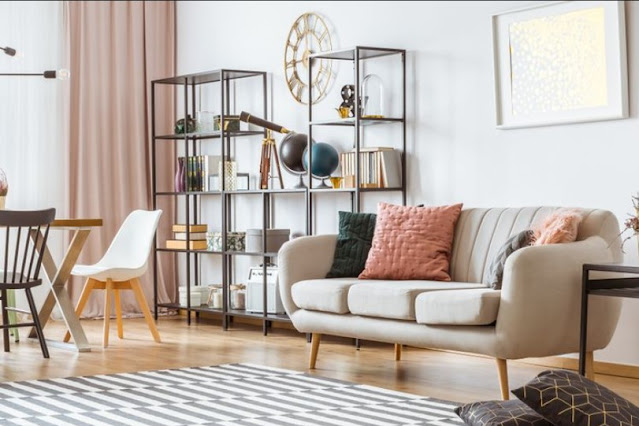To make sure the house feels more comfortable to live in, anyone would not want to get all kinds of noise disturbances that come from outside the house.
Unfortunately, the noise will be very difficult to avoid, especially for houses located on the edge of a major road or adjacent to a neighbor's house.
However, all kinds of noise can be minimized or even eliminated if your house is soundproof, so it will help eliminate noises that disturb sleep in the middle of the night or don't make you focus.
Making your home soundproof will not only put an end to distractions, it will change the quality of your life for the better by maximizing relaxation, while also preventing your neighbors from listening to your private conversations.
Here are some ways to make your house soundproof so that there are no distractions while you work or relax, quoted from several sources.
how to soundproof a room from outside noise
1. Install the door seal on the door
Do you hear everything outside the house? There may be a large air gap around your front door.
In order to keep the noise from coming in, you can close the large gap in the door by installing a door seal or door seal at home supply stores or online stores.
Choose a thick door seal so that your house is completely soundproof. In addition to making soundproof, door seals also prevent dust and insects from entering the door's air gap.
2. Stick the rubber or coating to the wall
Sounds that arise from outside can be reflected onto hard surfaces, such as walls, floors, and ceilings. If you want to make a soundproof house, you need to minimize the possibility of sound being reflected, namely by covering the floor and walls of the room using a carpet or rubber mat attached to the wall surface.
3. Use vinyl
As said earlier, sounds that arise from outside can be reflected onto hard surfaces, such as walls, floors, and ceilings.
To minimize the sound that bounces off the floor, you can use vinyl which can help you eliminate unpleasant noise from outside.
4. Install gypsum
Because sound can be reflected from the ceiling, you can muffle it by installing gypsum. Currently there is a type of gypsum that is devoted to soundproofing with various thicknesses.
When you want to install gypsum, you can fill the gap between the wall and gypsum with sound-absorbing material, such as glasswool or rockwool to ensure that the sound that bounces off the ceiling can be muffled.
5. Use thick carpet
If the vinyl on the floor is very difficult, just use a thick carpet on the floor so that the sound of the reflection is absorbed well.
To be more soundproof, tuck a rug pad or carpet under the carpet that is also thick.
6. Install the acoustic panels
Even though acoustic panels should be installed in music studio spaces, that doesn't mean you can't install them in your home.
Acoustic panels are interior elements designed to prevent sound from bouncing off hard surfaces, and block sound waves from entering through doors or windows, making your home very effective in soundproofing.
7. Install soundproof curtains
Installing soundproof curtains made with special fabrics helps reduce noise.
This may not completely eliminate outside noise, but it will significantly reduce noise which in turn will help you sleep well.
8. Try using a sound-absorbing wall paint
Maybe you don't know that there are wall paints that are specially formulated to muffle sound.
Before following some of the steps above, applying soundproofing wall paint can be the maximum first step if you want to really make your house soundproof.
Read also :
